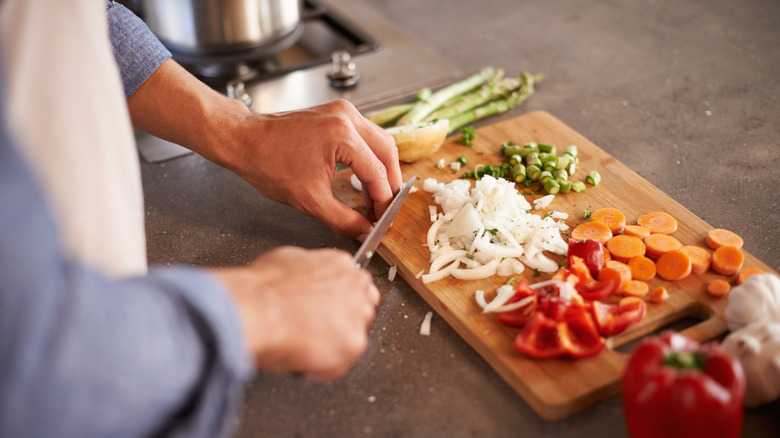How to seal a cutting board after engraving: exclusive tips
Written By James Morgan
Barbecue enthusiasts know the importance of maintaining their tools and equipment. One essential tool in every grilling aficionado's arsenal is the cutting board. But when you've gone the extra mile to engrave your cutting board, proper sealing becomes crucial to preserve that detailed, handsome work. Learning how to seal a cutting board after engraving not only ensures your masterpiece remains pristine but also guarantees your food preparation surface remains safe and functional.
Once you've invested in engraving a cherished message, logo, or design on your cutting board, the next step is to protect that investment. An unsealed cutting board is vulnerable to moisture, bacteria, and wear. By sealing it, you extend its lifespan, keep it hygienic, and ensure it remains a focal point of your BBQ adventures.

Preparation Before Sealing
Before you dive into sealing, you must prep your cutting board to ensure the sealant adheres well. Preparation involves cleaning, sanding, and thoroughly drying the board.
1. Cleaning the Board
Wash the cutting board with mild soap and warm water. This helps to remove any wood particles, dust, and oils. Avoid soaking the board as this can lead to warping.
2. Sanding for a Smooth Finish
Use fine-grit sandpaper (220 grit works well) to sand the entire surface, paying extra attention to the engraved section. Sanding ensures the board is smooth and ready for the sealant.
3. Proper Drying
Allow the board to dry completely. This might take several hours to a day, depending on your climate. Ensuring the board is thoroughly dry prevents moisture from getting trapped under the seal.

Choosing the Right Sealant
When it comes to choosing a sealant for your cutting board, there are two main options: natural oils and commercial sealants.
Natural Oils: The Traditional Choice
Food-safe mineral oil and beeswax are popular choices among barbecue enthusiasts for sealing cutting boards. They are non-toxic and wood-friendly. Mineral oil penetrates deep into the wood, while beeswax provides a protective top layer. A combination of both is often recommended.
Commercial Sealants: Modern Solutions
Several commercial sealants are food-safe and designed to provide long-lasting protection. These sealants usually come with a mixture of oils and waxes for added durability.
:max_bytes(150000):strip_icc()/prevent-cutting-board-slipping-1123-c9837c7f958745b792c2b115c7d7bccd.jpg)
Step-by-Step Guide to Sealing Your Board
1. Application of the Sealant
Whether you're using a natural oil or commercial sealant, apply a thin, even coat to the entire cutting board. Pay extra attention to the engraved areas, ensuring the sealant fills any grooves or designs.
2. Letting the Sealant Penetrate
Allow the sealant to sit for at least 15-20 minutes. This gives it time to penetrate the wood fibers.
3. Wiping Off Excess
After the waiting period, use a clean cloth to wipe off any excess sealant. This prevents a sticky or greasy feel.
4. Buffing for a Polished Finish
Using a soft, clean cloth, buff the board until it has a smooth, shiny finish. This step ensures your board looks as good as it functions.

Maintenance for Longevity
Regular maintenance is key to keeping your engraved cutting board looking its best. Reapply the sealant once a month, or whenever you notice the board starting to dry out. Additionally, avoid placing the board in the dishwasher, as the intense heat and water pressure can degrade the sealant.
Storage Tips
Store your cutting board in a cool, dry place, and avoid stacking it directly under heavy objects. This ensures its longevity and keeps the engraving from getting damaged.
Proper Cleaning
After each use, clean the board with mild soap and warm water. Dry it thoroughly to prevent any moisture from seeping into the wood.
FAQ
What type of oil is best for sealing an engraved cutting board?
The best oils for sealing an engraved cutting board are food-safe mineral oil and beeswax.
Can I use olive oil to seal my cutting board?
No, olive oil can turn rancid over time and is not recommended for sealing cutting boards.
How often should I reseal my cutting board?
It's best to reseal your cutting board once a month or whenever it starts to look dry.
For more detailed insights on maintaining your cutting boards, check out Cutting Board Care Guide and Cutting Board Hygiene for more tips and tricks.
Need more tips on cutting boards and kitchen maintenance? Visit our blog on cutting board colors and cutting board shedding.
As an Amazon Associate, I earn from qualifying purchases.



